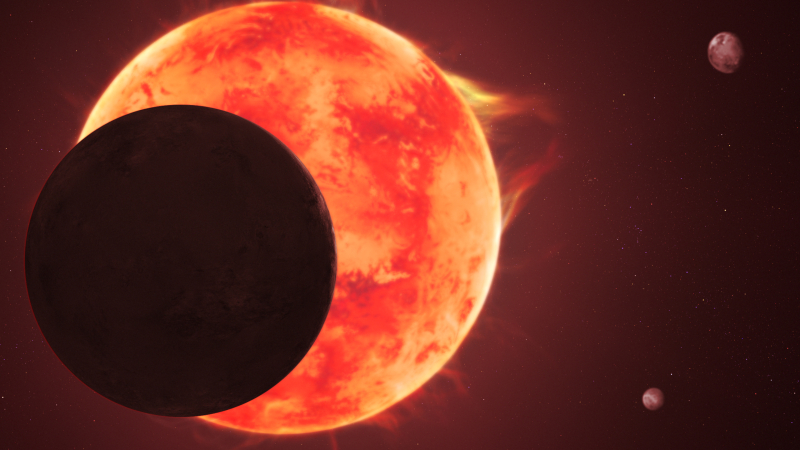Follow us on Google News (click on ☆)
Discovered in 2017, the TRAPPIST-1 system, located 40 light-years away, consists of at least seven rocky planets of comparable size to Earth orbiting a small "red dwarf" type star. Among these seven planets, four receive an amount of energy that could theoretically allow them to host liquid water on their surface, a key criterion in the search for life elsewhere in the Universe!

Artistic rendition of TRAPPIST-1 d passing in front of its turbulent star, with other members of the closely packed system shown in the background.
© NASA, ESA, CSA, Joseph Olmsted
Since its launch, the JWST has undertaken to observe the planets of this system to detect potential atmospheres. The first observations focused on the planets closest to the star, TRAPPIST-1b and c. They made it possible to measure their temperature and rule out the presence of certain dense atmospheres similar to those of Venus and Earth.
In this new study, scientists used the JWST's NIRSpec instrument for the first time to observe the transit spectra of TRAPPIST-1d. This is the third planet from the star and receives the most Earth-like insolation. The goal was to detect the spectral signatures of a potential atmosphere.
This work was made particularly difficult by the activity of the star TRAPPIST-1. Like many red dwarfs, the star is subject to brightness variations (due in particular to the presence of starspots) that can "contaminate" the observed signal, thus complicating the identification of the planet's true contribution.
The observations conducted revealed no clear signature of molecules characteristic of a dense atmosphere (like Earth's atmosphere) such as water vapor, carbon dioxide, or methane. This absence of signal suggests that TRAPPIST-1d is either devoid of an atmosphere, enveloped in an extremely thin atmosphere (similar to Mars), or covered by thick clouds at high altitudes like on Venus.
This result marks a major milestone: it's the first time the JWST has allowed such a detailed examination of a temperate, rocky planet outside our solar system. New observations are currently being analyzed for the more distant planets of TRAPPIST-1. Due to their greater distance from the star and their higher gravity, they might have better preserved their atmospheres.
This research is part of the goal to better understand the conditions necessary for the emergence of habitable worlds and to refine our vision of the diversity of rocky exoplanets in the Universe.